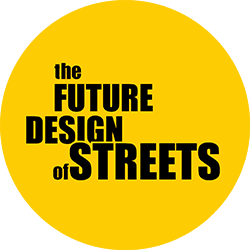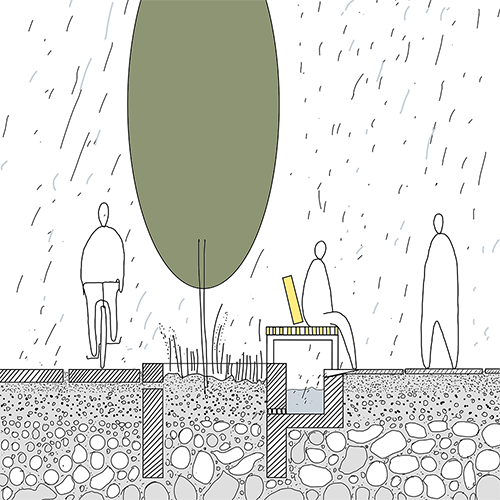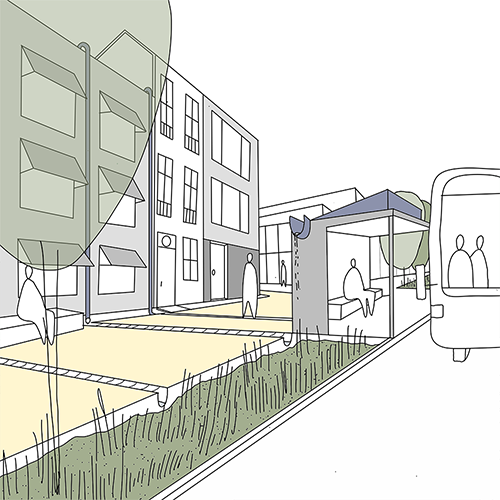WATER & AIR
A sponge city that can retain, use and reuse water as a part of climate adaptation and to deal with the heat in the city.
Jan Benden
In principle there are three strategies for rain water in the streets. The simplest and more efficient way is to retain the water locally by infiltration (or by evaporation) and re-using the water for gardening. Another way to manage rainwater in streets is by transportation. That can be done traditionally in underground sewerage systems, but can be also designed in a less hierarchical manner based on a fine-grain network of small retention parts and ecological water lines (through several porous materials). The last option is using the street space as temporary extra water capacity in case of extreme raining days.
Designing driving lanes or cycling lanes that can retain temporary water, can serve mobility, as well space for climate adaptation. It can provide and design some lanes that can retain water in the most critical moments of critical storms.
It could be interesting to think about neighbourhood infrastructure with local purification. The possibility of using some domestic wastewater.
A proximity system that could also include water recovery from impermeable surfaces. A system that looks at water as a precious commodity.
Implementing wind towers or other elements on the top of the buildings is also importante to produce energy in all seasons, for example to generate fresh air on warm summer days (this might also be an option for streets).
In case of very dry areas the challenges are very different. Retaining water in all matters will be an essential assignment in order to create green urban structures that can provide shades and cooling effects at the street level.
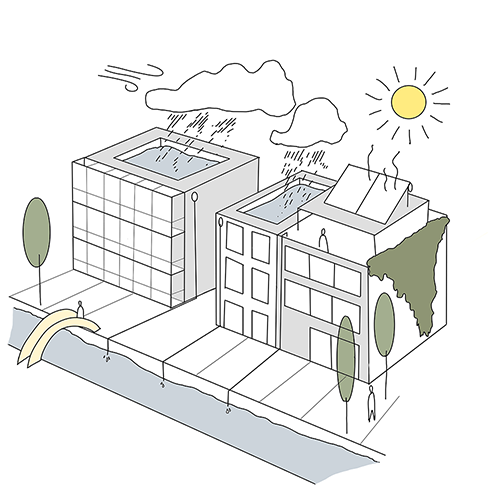
AIR QUALITY
Clean air is essential for a healthy living environment. Lowering gases and particles, using less carbon-based transport modes, as well other environmental impacts that are caused by urban lifestyles should be reduced to the minimum.
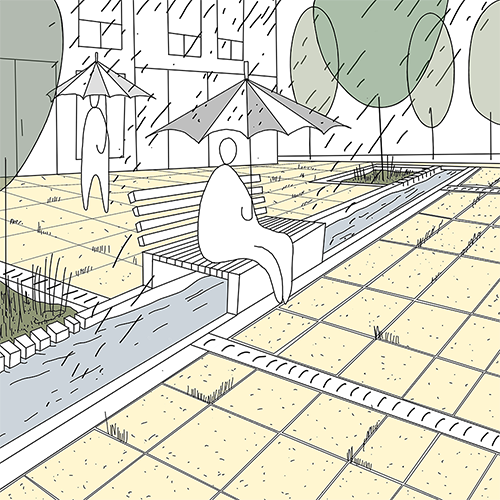
POROSITY
Climate change demands the adaptation of existing urban networks. The porosity of urban pavements is important for urban ecology and water retaining systems. Customisation is needed, depending on dry or wet local weather/climate conditions. The presence of water in the street has an environmental value but also a playful one.
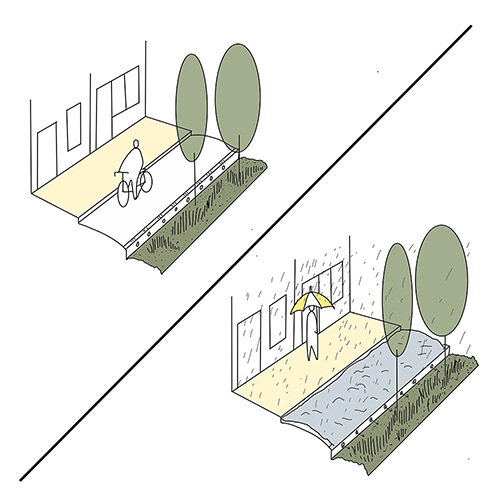
FLEXIBLE ADAPTATION
A good water system should function in all seasons.
In order to manage peak load precipitation, water systems – of rainwater infiltration – should be flexible. Like combining a bike lane with a storm water system.
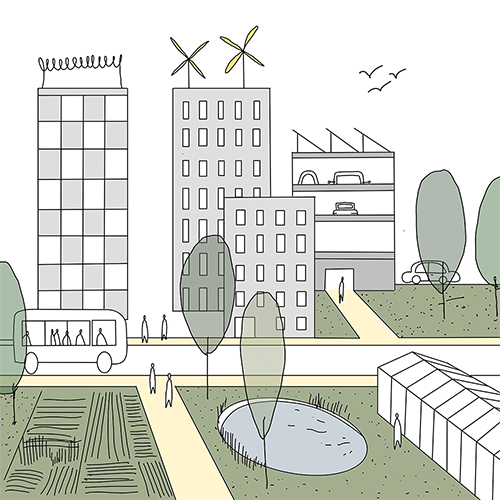
COLLECTIVE SYSTEMS
Integrated systems can exist with the combination of some large collective and a lot of small private systems/units, or for example in: reuse of water, sustainable heating/cooling system, and solar energy. The street as space for all kinds of urban networks can therefore also change.
